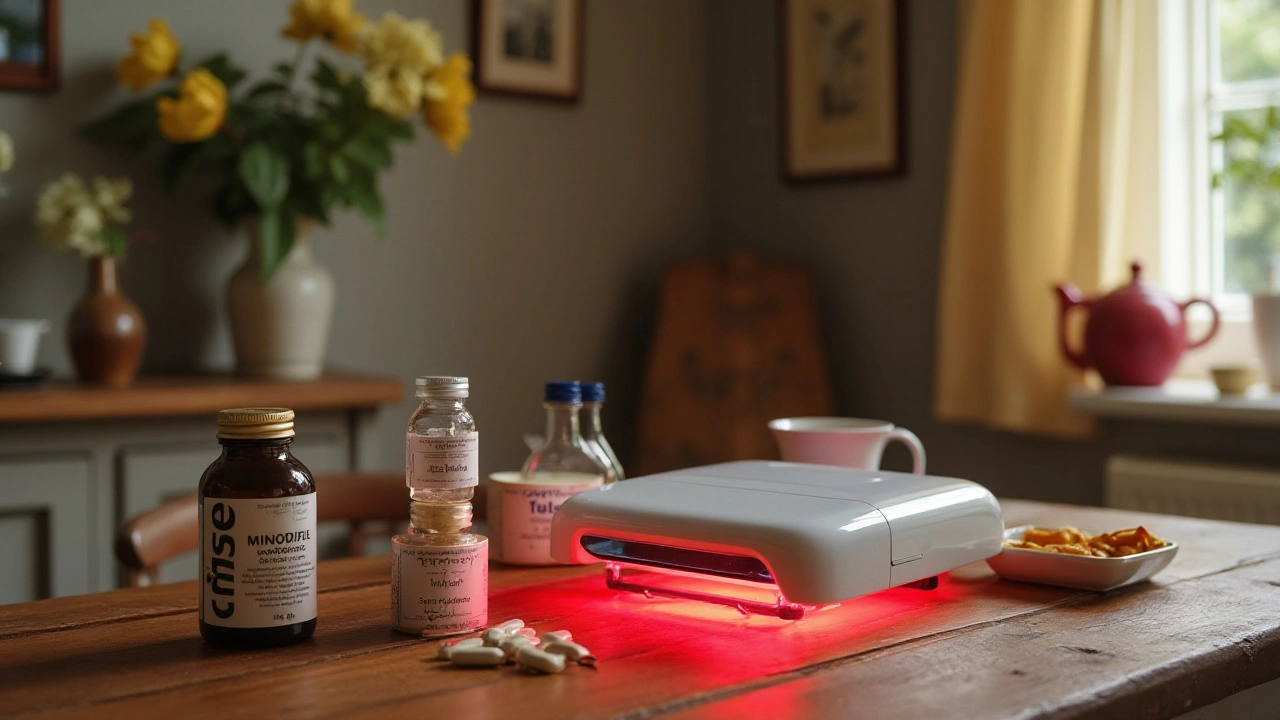Hair Loss Treatments That Actually Work
If you’re scrolling through endless advice and still wonder what will help your thinning hair, you’re not alone. Most people start with a quick Google search, see a mix of miracle claims and pricey products, and end up confused. This guide cuts the noise and gives you straight‑forward options you can try today.
Medical Options You Can Trust
The first place many turn to is prescription medication. Two drugs dominate the market: minoxidil (the over‑the‑counter foam or liquid) and finasteride (a daily pill). Minoxidil works by widening blood vessels in the scalp, delivering more nutrients to hair follicles. It’s easy to apply but needs consistent use for at least four months before you notice growth.
Finasteride blocks the hormone DHT, which shrinks follicles in men with pattern baldness. Most users see slower shedding within a few weeks and thicker hair after three to six months. Women should avoid finasteride unless prescribed by a specialist because of potential side effects.
If you’re not comfortable with pills or foam, low‑level laser therapy (LLLT) offers a non‑invasive alternative. Handheld combs or caps emit red light that stimulates follicle activity. Studies show modest improvement after several months, and the devices are safe for daily use.
Natural & Lifestyle Tips That Boost Results
Medication works best when you support it with healthy habits. A diet rich in protein, iron, zinc, and biotin gives hair the building blocks it needs. Think eggs, lean meat, beans, nuts, and leafy greens. If you’re vegetarian or vegan, consider a B‑complex supplement to cover any gaps.
Scalp massage isn’t just relaxing—it can increase blood flow and help nutrients reach follicles faster. Spend two minutes each day using your fingertips or a gentle brush, moving in circular motions. Pair this with essential oils like rosemary or peppermint diluted in carrier oil for added stimulation.
Avoid harsh styling practices that pull on the hair shaft. Tight ponytails, frequent heat tools, and aggressive brushing can cause breakage that mimics thinning. Switch to a wide‑tooth comb, let hair air dry when possible, and use a sulfate‑free shampoo to keep the scalp clean without stripping natural oils.
Stress is a hidden culprit behind sudden shedding. Simple techniques—deep breathing, short walks, or a five‑minute meditation—can lower cortisol levels that otherwise push hair into the resting phase.
Finally, track your progress. Take photos every two weeks from the same angle and lighting. Seeing subtle changes motivates you to stay consistent with treatments, and it helps you spot what’s working before spending more money on untested products.
